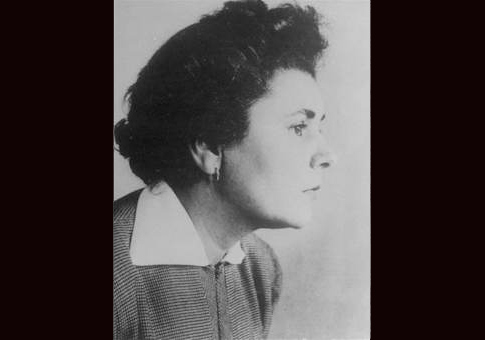In a mostly laudatory review of her Collected Poems in 1969, John Ashbery wrote that Elizabeth Bishop was "somehow an establishment poet," which is to say that she wasn’t exactly, probably because the word "establishment" was as meaningless in 1969 as it is today.
For poets and critics who like to keep such lists, Bishop has always been a problem. She was a lesbian who held onto her Baptist propriety throughout life. ("I don’t like words like ‘loins’, ‘groins’, ‘crotch’, ‘flanks’, ‘thighs’," she once wrote to the poet May Swenson. "They are in general ugly words that startle the reader.") She had little interest in creating a "new" poetry that replicated the techniques of the other arts or supposedly broke free of all moral or aesthetic constraints. She was shy and, unlike Charles Olson or Allen Ginsberg, uninterested in bombast or self-promotion. She spent many of her adult years not in New York or London or Paris, but in Key West (six years) and Brazil (14). She won the Pulitzer Prize in 1956 but wrote little, completing only five slim books of poetry and publishing just 101 poems, including translations, in over fifty years of writing. While she taught at Harvard toward the end of her life, some of her courses attracted as few as five students (one of whom was Dana Gioia).
For many critics, one of the defining characteristics of Bishop’s work is her constraint. So it is, too, for Irish novelist Colm Tóibín, who argues in On Elizabeth Bishop—the latest volume in Princeton’s hit-and-miss "Writers on Writers" series—that unlike the confessional poems of Robert Lowell, a long-time friend and regular correspondent, Bishop’s work was rooted in personal experience but devoid of overly personal details and melodrama. Poetry, for her, "was not self-expression" he writes, but a form of truth-telling in which "there is very little that can be said, but there is much that can be suggested."
To help us better appreciate Bishop’s accomplishment, Tóibín regularly remarks on "what is left out" of the poems. Her early poem "Roosters," for example, was written shortly after the Navy arrived in Key West, "much to Bishop’s annoyance." It describes the noisy and violent lives of roosters (and hens) with her trademark casual precision, but it also contains lines such as "what right have you to give / commands and tell us how to live" or "and one is flying / with raging heroism defying / even the sensation of dying." The poem could be read, Tóibín writes, as an "antiwar poem" or a condemnation of "a world run by men," but it shouldn’t—or it shouldn’t only be read as these things. It is also a poem about morning, Tóibín argues, and, of course, about roosters. To reduce it to the immediate contexts of its composition is to miss its "immense suggestive power."
"The Armadillo," another of Bishop’s relatively early works, is "infused … with a sense of loss," Tóibín writes, while the voice of the poem somehow "remains at the edge of things." In a late poem on a painting by her great-uncle in which she recognizes the landscape of her early childhood in Nova Scotia, the tone is one of "helpless reverie, infinite and puzzled regret" but with "no direct mention … of how she might feel."
In her most widely read poem, "One Art," which begins "The art of losing isn’t hard to master" and lists the many things in life the speaker has lost ("door keys," "my mother’s watch," "two cities"), including a "you" in the final stanza, Tóibín writes that what Bishop doesn’t mention is losing her father (who died before she turned one), her mother (who was institutionalized when she was five), and her partner, Lota de Macedo Soares (who committee suicide in 1967). To have mentioned these, Tóibín thinks, may have ruined the tension between stoicism and self-pity.
Tóibín’s point throughout is that Bishop’s artistry is in using concrete actions and objects to evoke particular emotions without stating them directly. Like Emily Dickinson, Bishop understood that poetry tells truth’s "slant," or, in Tóibín words, somehow communicates the "unmentionable." That the arts, including poetry, communicate indirectly is hardly a new idea, but in an age of increasingly political or (merely) personal poems, it may be worth remembering.
Tóibín is an eloquent guide overall, but he is rather eclectic, often discussing in a cursory way other elements of Bishop’s artistry, such as her regular use of established form and various kinds of rhyme. He does scan "Roosters," telling us that Bishop borrowed the rhyme scheme (which he tackily refers to as the "rhyme-scream") from the 17th century metaphysical poet Richard Crashaw, and identifies her various use of sounds in the poem, but the whole exercise doesn’t add up to much, and it is the only time he attempts it.
Missing, too, is any satisfactory discussion of Bishop’s many startling similes and metaphors, which, in my view, are among the greatest pleasures of reading her. Tóibín will occasionally note a pleasing phrase, but often only in passing. Yet, Bishop’s work is full of them. Peninsulas "take the water between thumb and finger / like women feeling for the smoothness of yard-goods." An iceberg, "Like jewelry from the grave … saves itself perpetually and adorns / only itself." A storm roams the sky "uneasily / like a dog looking for a place to sleep." A beach "hisses like fat."
It is perhaps unfair to expect anything like a comprehensive introduction from a writer writing on another writer. Almost invariably, living authors can only see the characteristics they share (real or imagined) with an old master, and Tóibín is no exception. Less forgivable are the long passages on Thom Gunn’s view of Bishop towards the end of the volume, which make it look as if Tóibín had run out ideas.
But if you’ve never read Bishop and want to know if she’s worth your time (she is), Tóibín’s slim volume is not a bad place to start.
